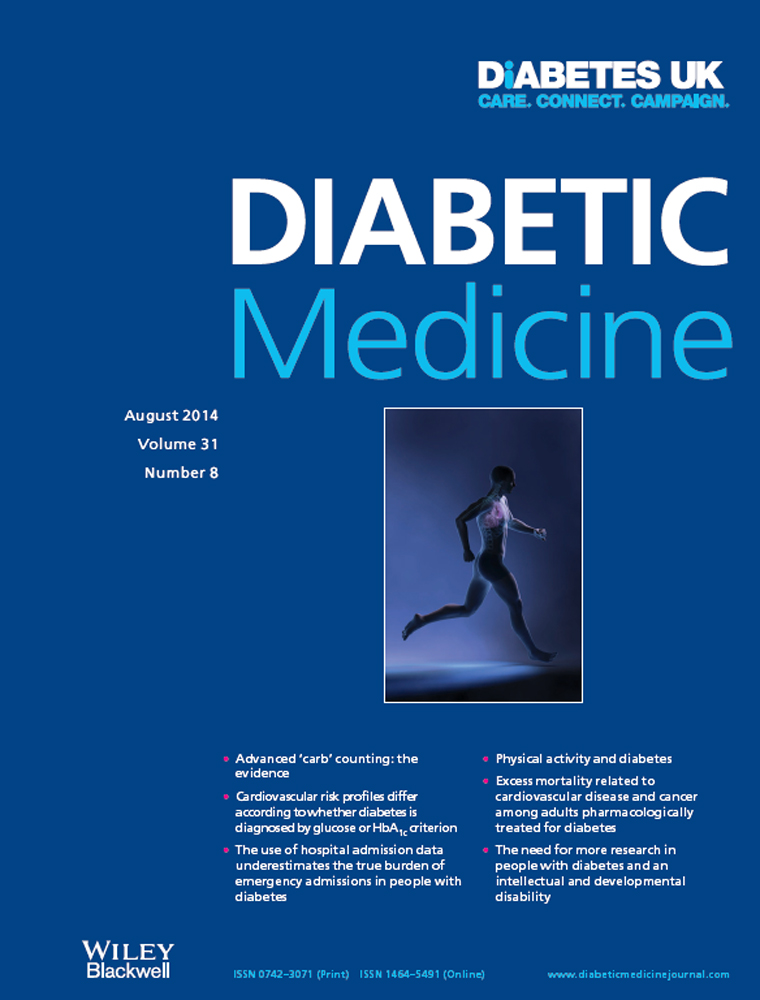Similar weight-adjusted insulin secretion and insulin sensitivity in short-duration late autoimmune diabetes of adulthood (LADA) and Type 2 diabetes: Action LADA 8
Abstract
Aims
To explore insulin sensitivity and insulin secretion in people with latent autoimmune diabetes in adulthood (LADA) compared with that in people with Type 2 diabetes.
Methods
A total of 12 people with LADA, defined as glutamic acid decarboxylase (GAD) antibody positivity and > 1 year of insulin independency (group A) were age-matched pairwise to people with Type 2 diabetes (group B) and to six people with Type 2 diabetes of similar age and BMI (group C). β-cell function (first-phase insulin secretion and assessment of insulin pulsatility), insulin sensitivity (hyperinsulinemic-euglycemic clamp) and metabolic response during a mixed meal were studied.
Results
Both first-phase insulin secretion and insulin release during the meal were greater (P = 0.05 and P = 0.009, respectively) in Type 2 diabetes as compared with LADA; these differences were lost on adjustment for BMI (group C) and could be explained by BMI alone in a multivariate analysis. Neither insulin pulsatility, incretin secretion nor insulin sensitivity differed among the groups.
Conclusions
We found no evidence that LADA and Type 2 diabetes were distinct disease entities beyond the differences explained by BMI.




